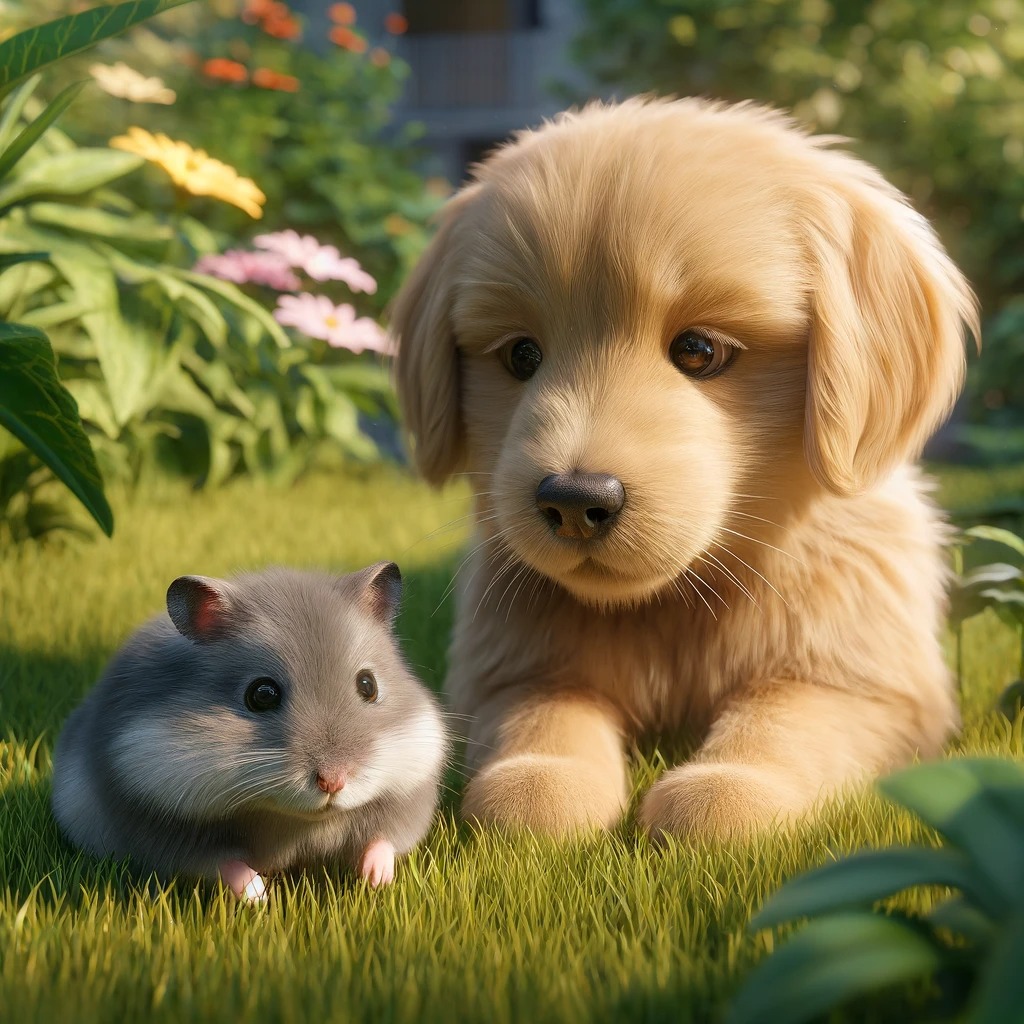
Introducing your hamster to other pets can be a challenging task, but with the right approach, it can also be a rewarding experience. Whether you have a dog, a cat, or other small animals, socializing your hamster can promote companionship and reduce feelings of loneliness. However, it’s essential to approach the introduction process carefully to ensure the safety and well-being of all your pets.
Why is hamster socialization important?
Hamsters are naturally social animals and can benefit greatly from social interaction with other pets. Introducing your hamster to other animals can help prevent them from feeling isolated or bored, which can lead to behavioral issues. Socialization also allows your hamster to develop important social skills and provides mental stimulation.
When hamsters are properly socialized, they are less likely to exhibit aggressive or anxious behavior. Additionally, socializing your hamster can prevent them from becoming territorial and aggressive towards other pets in your household. By providing opportunities for positive interactions, you can create a harmonious environment for all your pets.
Understanding your hamster’s behavior
Before introducing your hamster to other pets, it’s crucial to understand their behavior and preferences. Hamsters are solitary animals by nature, and some may be more territorial than others. It’s important to consider your hamster’s personality and temperament when planning for socialization.
Observe your hamster’s body language and behavior to gauge their comfort level. Signs of stress or fear include rapid breathing, trying to hide, and excessive grooming. On the other hand, relaxed and curious behavior, such as exploring their surroundings or interacting with toys, indicates a more comfortable and confident hamster.
Keep in mind that hamsters are nocturnal animals, so they may be more active and receptive to socialization during the evening or nighttime hours. By understanding your hamster’s behavior, you can tailor the socialization process to their individual needs.
Preparing for hamster socialization
Before introducing your hamster to other pets, it’s essential to create a calm and secure environment. This will help reduce stress and increase the chances of a successful introduction. Here are some steps to follow when preparing for hamster socialization:
- Separate living spaces: Ensure that each pet has its own designated living space to prevent any territorial disputes. This will allow your hamster to have a safe retreat if needed.
- Scent swapping: To familiarize your pets with each other’s scent, you can swap bedding or toys between their living spaces. This will help them become accustomed to each other’s presence before direct contact.
- Clean and neutral area: When introducing your hamster to other pets, choose a neutral area, like a separate room or a neutral territory within your home. Remove any potentially harmful objects or hazards that could cause stress or injury.
By taking these steps to prepare for socialization, you can create a safe and comfortable environment for your hamster and other pets.
Introducing your hamster to other pets – cats and dogs
Introducing your hamster to cats and dogs requires careful supervision and gradual introductions. Here’s a step-by-step guide to help you navigate the process:
- Initial introductions: Start by allowing your pets to interact indirectly. Place your hamster’s cage in a secure location where your dog or cat can observe from a distance. This will help them become familiar with each other’s presence without direct contact.
- Controlled interactions: Once your pets seem comfortable with each other’s scent, you can proceed to controlled interactions. Use a secure hamster ball or a playpen to separate your hamster from your dog or cat initially. Allow them to interact under close supervision, ensuring that your hamster has an escape route and can retreat to their cage if needed.
- Positive reinforcement: Reward both your hamster and other pets with treats and praise for calm and non-threatening behavior during interactions. This will help create positive associations with each other’s presence.
Remember, never leave your hamster unattended with a dog or cat, as they may view the hamster as prey. Supervise all interactions closely and be prepared to intervene if necessary.
Introducing your hamster to other pets – rabbits and guinea pigs
Introducing your hamster to rabbits and guinea pigs can be a smoother process, as these animals have similar social structures. Follow these steps for a successful introduction:
- Neutral territory: Choose a neutral territory for the initial introduction, like a separate playpen or a neutral room. This will help prevent territorial disputes.
- Supervised interactions: Allow your hamster, rabbit, and guinea pig to interact under close supervision. Ensure that each animal has enough space and resources to avoid competition or aggression.
- Gradual introductions: Start with short and supervised play sessions, gradually increasing the duration as they become more comfortable with each other. Watch for any signs of aggression or stress and separate the animals if necessary.
Introducing your hamster to other hamsters
Introducing your hamster to another hamster can be a delicate process, as hamsters are known to be territorial. Follow these steps to introduce your hamster to a potential cage mate:
- Separate cages: Keep your hamsters in separate cages initially to allow them to get used to each other’s scent. Place their cages side by side, allowing them to interact indirectly.
- Neutral territory: Once they seem comfortable with each other’s scent, choose a neutral territory for their initial face-to-face meeting. This can be a playpen or a neutral room where neither hamster has established territory.
- Supervised interactions: Allow the hamsters to interact under close supervision. Watch for any signs of aggression, such as fighting or excessive chasing. Be prepared to separate them if necessary.
- Gradual introductions: If the initial interactions go well, you can gradually increase their time together under supervision. Monitor their behavior closely for any signs of aggression or stress.
Signs of successful hamster socialization
When socialization is successful, you will notice positive signs in your hamster’s behavior. These signs include:
- Curiosity and exploration: A socially well-adjusted hamster will be curious about their environment and engage in exploratory behavior.
- Relaxed body language: A content hamster will have a relaxed body posture, with their ears forward and their fur smooth.
- Playfulness: Socialized hamsters often engage in play, such as running on their wheel or interacting with toys.
- Interactions with other pets: Successful socialization will result in positive interactions between your hamster and other pets. They may groom each other, play together, or simply coexist peacefully.
Common challenges in hamster socialization
While hamster socialization can be a rewarding process, it’s important to be aware of the common challenges you may encounter:
- Territorial behavior: Hamsters are naturally territorial, and some may be more aggressive or possessive of their space. It’s essential to monitor their behavior closely and intervene if necessary.
- Incompatible personalities: Not all hamsters or other pets will get along. Personalities and temperaments vary, and some animals may simply not be compatible. Respect their individual preferences and be prepared to keep them separate if needed.
- Stress and fear: Some hamsters may become stressed or fearful during socialization attempts. If your hamster consistently exhibits signs of stress or fear, it may be best to focus on providing them with a stimulating and enriching environment instead.
Tips for successful hamster socialization
To ensure successful hamster socialization, consider the following tips:
- Patience and gradual introductions: Take your time and allow your pets to become familiar with each other’s presence slowly. Rushing the process can lead to stress and negative experiences.
- Supervision and safety: Always supervise interactions between your hamster and other pets. Be prepared to intervene if necessary to ensure the safety of all animals involved.
- Positive reinforcement: Reward calm and non-threatening behavior with treats and praise. This will help create positive associations with socialization.
- Respect individual preferences: Not all hamsters or other pets will enjoy socialization. Respect their individual preferences and provide them with appropriate enrichment and companionship in other ways.
Conclusion
Introducing your hamster to other pets can be a rewarding experience that enhances the well-being of all your animals. By understanding your hamster’s behavior, preparing for socialization, and following gradual and supervised introductions, you can create a harmonious environment where your pets can coexist peacefully. Remember to monitor their interactions closely, respect their individual preferences, and be prepared to adapt your approach as needed. With patience and care, you can create a happy and social environment for your hamster and other pets.

